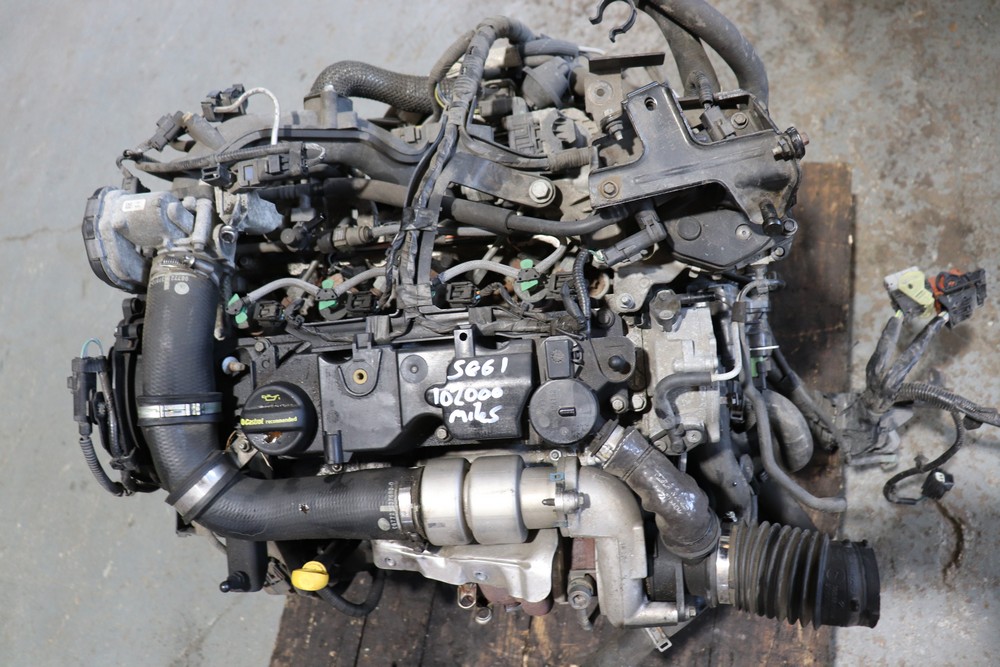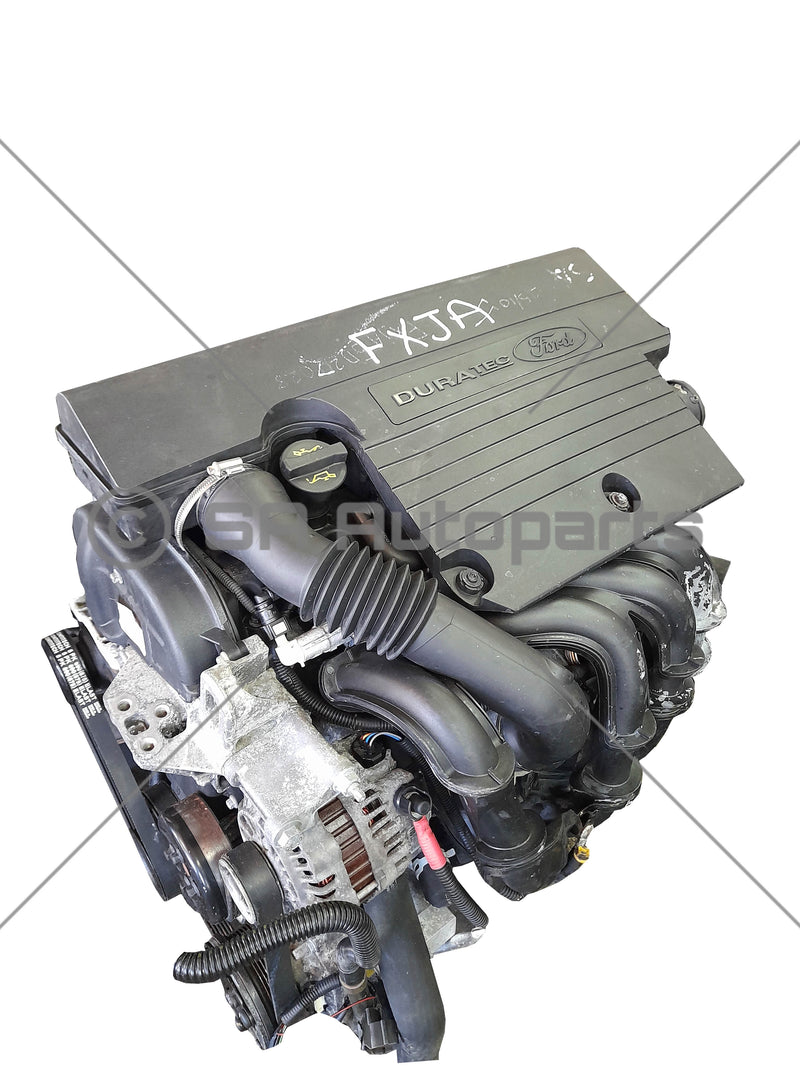What to Look for When Buying a Used Ford Fiesta Engine
What to Look for When Buying a Used Ford Fiesta Engine
Blog Article
Discovering the Evolution of Engines: From Traditional Layouts to Modern Marvels
The evolution of engine technology stands for a significant narrative in the history of innovation, marked by pivotal innovations that have constantly redefined transportation and industry. From the preliminary heavy steam engines that powered the Industrial Revolution to the development of internal burning engines that transformed wheelchair, each phase has added to better performance and ability. Currently, the change to electrical power symbolizes not only a technical shift but also a more comprehensive commitment to environmental sustainability. As we check out these milestones, one must take into consideration exactly how the future of engine design may unravel, challenging our perceptions of power and performance.
The Birth of Engine Modern Technology
The advent of engine modern technology marked a pivotal moment in human advancement, transforming power conversion and transportation. The earliest engines emerged from the requirement to harness mechanical power for sensible use, leading to the development of devices that transformed different energy kinds right into activity (ford fiesta engine).
The growth of the inner burning engine and the invention of the steam engine militarized an extensive shift in industrial capabilities. These engines not only boosted efficiency yet additionally expanded the scope of human movement, making it possible for unmatched transport opportunities. The early prototypes laid the foundation for the mechanical globe, helping with the rise of industries and reshaping social structures.
As engine styles developed, they advanced and included ingenious materials engineering concepts, leading the way for contemporary advancements - ford fiesta engine. The birth of engine technology stired up a ruthless pursuit of efficiency and power, establishing the stage for the vibrant evolution of transport and industrial equipment that would follow
Steam Engines and Their Effect

The steam engine's effect was especially evident in the transport market (ford fiesta engine). Steam-powered locomotives promoted the fast movement of items and people across substantial ranges, effectively shrinking the geographical obstacles that had formerly hindered profession and communication. Similarly, steamships changed maritime traveling, permitting quicker and more trusted crossings of rivers and oceans.
In sector, heavy steam engines powered manufacturing facilities, enabling mass manufacturing and the increase of metropolitan centers as centers of economic activity. Steam technology promoted developments in design and production procedures, laying the foundation for future innovations in engine design.
The Rise of Internal Combustion
Regularly overshadowing steam power, the rise of internal burning engines marked a transformative change in transport and market during the late 19th and very early 20th centuries. The growth of these engines, identified by their capability to shed fuel within the engine itself, allowed greater effectiveness and power contrasted to traditional steam engines. Introducing developers such as Nikolaus Otto and Rudolf Diesel played essential duties in developing engine layouts, resulting in extensive fostering in vehicles, watercrafts, and industrial equipment.
The interior combustion engine's compact size and fairly light-weight nature helped with the appearance of personal automobiles, changing individual flexibility and reshaping metropolitan landscapes. By making it possible for faster travel and the efficient transport of goods, these engines militarized economic development and cultivated globalization. The adaptability of gas alternatives, including fuel and diesel, even more improved their charm, allowing for varied applications across numerous fields.
In spite of the ecological issues that would later on occur, the first allure of internal burning modern technology lay in its transformative possibility. As society embraced this innovation, the foundation was laid for modern-day transportation systems, developing inner combustion engines as a cornerstone of commercial improvement and day-to-day life throughout the 20th century.
Innovations in Engine Effectiveness
As inner combustion engines became integral to transport and market, the emphasis moved in the direction of improving their efficiency to satisfy growing demands for performance and sustainability. Technologies in engine design, material science, and modern technology have actually substantially contributed to this advancement.
One major innovation is the growth of turbocharging, which permits for raised air consumption, causing more full gas combustion and boosted power outcome without enlarging engine size. Furthermore, variable valve timing systems have been implemented to optimize engine performance throughout numerous RPM ranges, therefore improving fuel effectiveness.
The use of innovative fuel shot modern technologies, such as straight injection, has actually additionally played an important role. This technique allows for even more specific control over the fuel-air blend, promoting much better combustion and lowering emissions. Moreover, light-weight materials, including aluminum and composite parts, have actually been embraced to reduce general engine weight, bring about enhanced efficiency.
These innovations mirror a more comprehensive fad within the automotive industry, where the harmony in between engineering innovation and environmental considerations drives the continuous pursuit for higher effectiveness in internal burning engines. Because of this, modern engines are now more powerful, cleaner, and efficient than ever, leading the means for a much more sustainable future in transportation.
The Change to Electric Power
With growing problems over environmental effect and nonrenewable fuel source reliance, the automotive market is experiencing website here a significant shift in the direction of electrical power. This shift is driven by a combination of technical improvements, regulatory stress, and altering consumer choices. Electric lorries (EVs) provide an engaging option to standard inner burning engines, flaunting lowered greenhouse gas discharges and reduced operating expense.
The surge of battery technology has actually been a video game changer, with lithium-ion batteries ending up being more reliable and cost-efficient. Improved energy density and faster billing capabilities have made EVs more practical for everyday use. Federal governments worldwide are implementing motivations and establishing ambitious targets for phasing out fossil fuel vehicles, consequently increasing the fostering of electric power.
Significant car manufacturers are investing heavily in r & d, leading to the introduction of a varied variety of electrical models. This includes not only guest autos however additionally business automobiles and More Help public transportation remedies. As billing framework expands and battery modern technology proceeds to improve, the shift to electric power is positioned to improve the automobile landscape, promoting sustainability and technology in the years ahead. The future of transport is electrical, and the energy is obvious.
Final Thought
The development of engine innovation stands for a significant trajectory of advancement that has actually greatly influenced transport and sector. From the foundational vapor engines to the transformative interior burning engines, each development has added to boosted movement and financial growth.

Report this page